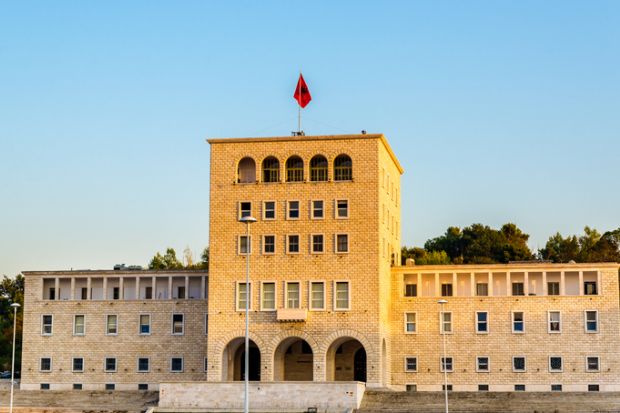Noisy student protests have returned to the streets of Tirana thanks to Albania’s assertive efforts to retain newly qualified medical doctors. In July, trainee medics held a rally outside parliament to condemn plans that will force them to remain in Albania for five years or contribute heavily towards the cost of their education.
But the government shows no sign of backing down. “We cannot accept that a medical student pays one-sixteenth of the cost of study with the government paying the rest… gets the diploma and goes to Germany or elsewhere,” said Albania’s prime minister, Edi Rama, earlier this year.
Both the problem and the proposed solution have precedents. To tackle skills shortages in the late 1980s, the communist regime required university graduates to accept employment in remote rural areas. A contract between students and the state, in which students reimbursed the government if they refused their assigned jobs, did not prove popular. The strategy failed and the government was eventually overthrown by the students it was trying to control.
Other cost-sharing initiatives in higher education have proven equally unpopular. In 2018, the government almost fell when students protested an increase in tuition fees at public universities, which the previous government had avoided even while expanding higher education from 2007 to 2013.
Student opposition was important in the plan’s failure but a lack of support from higher education institutions also contributed.
With these historical lessons in mind, the current government has taken a more confrontational approach to higher education, including sacking the rector of the University of Tirana in 2019, supposedly on grounds of academic incompetence. Under its controversial new higher education law, the Albanian government has also proposed plans to merge some of the country’s largest universities and research institutions, including the University of Korçë with the University of Tirana, and the Academy of Sciences of Albania with the Academy of Albanian Studies.
Rationalising resources is the official reason for both mergers. In the case of Korçë’s unification with Tirana, this makes some sense as enrolment at regional universities (Korçë is Albania’s eighth-biggest metropolis) has declined significantly due to migration and demographic decline.
But some detect more political goals behind the merger of Albania’s two academies. In the case of the Academy of Sciences – which began under Italian patronage as a Fascist nationalist project in the 1940s, before Stalinist modernisation in the 1950s and Chinese support in the 1970s – some argue it has outlived its usefulness. Others wonder if the aim is simply to allow the state to exert more political control by merging the Academy of Albanian Studies with an institution that is already state-controlled (the current head of the Academy of Albanian Sciences was minister of education in the late 1990s and is the former head of a political party).
This has strong echoes of the 1950s, when the government pursued a political strategy to manage personnel by dissolving the Institute of Sciences (which later returned as the Academy of Sciences in 1973) and setting up the University of Tirana. Scholars who trained in Austria and Italy under fascism and who refused to pledge political allegiance to the communists were gradually replaced by those educated in the Soviet Union.
This millennium, Sali Berisha, president from 2005 to 2013, weakened the Academy of Sciences and the University of Tirana by establishing the Academy of Albanian Studies in 2008 and the University of Medicine in 2012.
Similarly, mergers are also usually motivated by the political goals of the country’s political leadership. Rama’s style of governance is all about consolidation and concentration. The proposed mergers aim for similar outcomes: political oversight of academic patronage networks by integrating them into politically controlled institutions.
Although the solution aligns with models of efficiency in public administration, the intention is once again to control – either via newly created bodies or the talent-retention initiatives for medical students.
To the outsider, Albania’s decisive interventions in its higher education landscape could be portrayed as much-needed modernisation. In fact, they are eerily reminiscent of actions from the country’s communist or more recent past, when political control over higher education institutions was overwhelming.
Arjan Shahini is a PhD student at the Martin Luther University of Halle-Wittenberg, where he has focused on the history of Albanian higher education.
Register to continue
Why register?
- Registration is free and only takes a moment
- Once registered, you can read 3 articles a month
- Sign up for our newsletter
Subscribe
Or subscribe for unlimited access to:
- Unlimited access to news, views, insights & reviews
- Digital editions
- Digital access to THE’s university and college rankings analysis
Already registered or a current subscriber? Login








